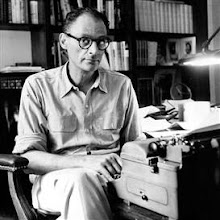 Alfréd Hajós (February 1, 1878 – November 12, 1955) was an Hungarian swimmer and architect. He was the first modern Olympic swimming champion.
Alfréd Hajós (February 1, 1878 – November 12, 1955) was an Hungarian swimmer and architect. He was the first modern Olympic swimming champion.He was born in Budapest, Hungary as Arnold Guttmann. He was 13 years old when he felt compelled to become a good swimmer after his father drowned in the Danube River, and then took the name Hajós (sailor in Hungarian) for his athletic career because it was an Hungarian name.
In 1896, Hajós was an architecture student in Hungary when the Athens Games took place. He was allowed to compete, but permission from the university to miss class had not come easy. When he returned to the Dean of the Polytechnical University, the dean did not congratulate Hajós on his Olympic success, but instead said: "Your medals are of no interest to me, but I am eager to hear your replies in your next examination."
At the 1896 Games, the swimming events were held in the Mediterranean Sea battling the elements. The 18-year old Hajós won his two gold medals in extremely cold weather (the water temperature was about 50 degrees Fahrenheit, or 10 degrees Celsius) with 12-foot (4-metre) waves crashing down on him. He won the 100 metre freestyle with a time of 1:22.2, and the 1,200 metre freestyle in 18:22.2. Hajós wanted to win all three distances, but the 500 metre freestyle was immediately after the 100 and immediately before the 1,200. Before the 1,200 metre race, he smeared his body with a half-inch (one centimetre) thick layer of grease, but it proved to be of little protection against the cold. He confessed after winning the race that, "my will to live completely overcame my desire to win." While at a dinner honoring Olympic winners, the Crown Prince of Greece asked Hajós where he had learned to swim so well. Hajós replied, "In the water." He was the youngest winner in Athens.
Prior to the Athens Olympics, Hajós was the 100 metre freestyle European swimming champion in 1895 and 1896.
A versatile athlete, he won Hungary's 100 metre sprint championship in 1898, as well as the National 400 metre hurdles and discus titles. He also played forward on Hungary's national soccer championship teams of 1901, 1902, 1903.
In 1924, Hajós, an architect specializing in sport facilities, entered the art competitions at the Paris Olympic Games. His plan for a stadium, devised together with Dezső Lauber (who played tennis in the 1908 Summer Olympics), was awarded the silver medal; the jury did not award a gold medal in the competition.
The best known sports facility designed by Hajós is the swimming stadion built on Margitsziget (Margaret Island) in the Danube in Budapest, which was built in 1930, and used for the 1958 and 2006 European Swimming Championships, and the 2006 FINA Men's Water Polo World Cup.
In 1953, the International Olympic Committee awarded him the Olympic diploma of merit. He is a member of the International Swimming Hall of Fame, and in 1981 he was also made a member of the International Jewish Sports Hall of Fame.
His brother Henrik Hajós won gold medal in 4x250 m Freestyle swimming at 1906 Olympic Games in Athens.
 Hajós Alfréd (eredetileg Guttmann Arnold) (Budapest, 1878. február 1. – Budapest, 1955. november 12.) építész, az első magyar olimpiai bajnok.
Hajós Alfréd (eredetileg Guttmann Arnold) (Budapest, 1878. február 1. – Budapest, 1955. november 12.) építész, az első magyar olimpiai bajnok.Budapesti izraelita családból származott. Miután a Műegyetemen oklevelet szerzett, Alpár Ignác irodájában, majd Lechner Ödönnel dolgozott. 1907-ben nyitott önálló irodát. Sikerrel vett részt pályázatokon, amelyek főleg vidéki megbízatásokhoz juttatták. 1924-ben a párizsi olimpia szellemi versenyében egy stadiontervével ezüstérmet szerzett (Lauber Dezsővel közösen). Visszaemlékezései 1956-ban jelentek meg Budapesten Így lettem olimpiai bajnok címen. Beceneve a "magyar delfin" volt.
1896-ban Athénban, az első újkori olimpiai játékokon megnyerte mind a 100 m-es, mind pedig az 1200 m-es úszószámot, ezzel ő szerezte a magyar sport első és második olimpiai aranyérmét. 1899-től, mikor megszerezte építészmérnöki diplomáját, felhagyott az aktív sportolással, de mint sportújságíró, illetve a Magyar Olimpai Bizottság tagja tovább támogatta a sportmozgalmat.
Játszott a magyar labdarúgó-válogatott első mérkőzésén 1902. október 12-én, Bécsben, balösszekötőként. 1906 őszén két mérkőzésen a válogatott szövetségi kapitánya volt.
Játszott a magyar labdarúgó-válogatott első mérkőzésén 1902. október 12-én, Bécsben, balösszekötőként. 1906 őszén két mérkőzésen a válogatott szövetségi kapitánya volt.
Főbb építészeti munkái
Eleinte szecessziós, majd eklektikus, kiforrott korában konstruktív, modern szellemű, leginkább olasz hatású stílusban alkotott:
Aranybika szálló (Debrecen)
Lőcsey Gimnázium (Debrecen)
a Nagy Lajos Gimnázium épülete (Szombathely)
Református Egyház Zsinati Központja (Budapest)
UTE Stadion (Újpest, Megyeri út) – 1922-ben tervezte
Nemzeti Sportuszoda (Budapest, Margit-sziget)
Millenáris Sportpálya
Miskolci sporttelep
Pápai sporttelep
Szegedi sporttelep
Kaposvári sporttelep
Leányiskola (Pozsony)
Népkerti Vigadó (Miskolc)
Weidlich-palota (Miskolc), 1911
Szegedi Úszóegyesület Uszodája (SZÚE, ma Ligetfürdő), 1930
Lőcsey Gimnázium (Debrecen)
a Nagy Lajos Gimnázium épülete (Szombathely)
Református Egyház Zsinati Központja (Budapest)
UTE Stadion (Újpest, Megyeri út) – 1922-ben tervezte
Nemzeti Sportuszoda (Budapest, Margit-sziget)
Millenáris Sportpálya
Miskolci sporttelep
Pápai sporttelep
Szegedi sporttelep
Kaposvári sporttelep
Leányiskola (Pozsony)
Népkerti Vigadó (Miskolc)
Weidlich-palota (Miskolc), 1911
Szegedi Úszóegyesület Uszodája (SZÚE, ma Ligetfürdő), 1930
















.jpg)


















Nincsenek megjegyzések:
Megjegyzés küldése